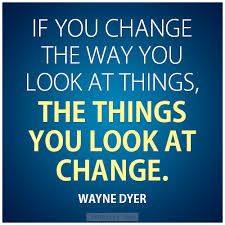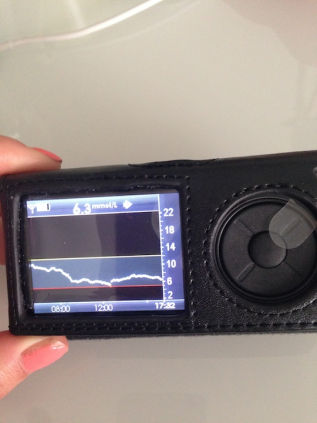Blog
Diabetes & The Victim Mentality
Scanning the diabetes related forums I’m active in, there are a few commonalities.
Supportive members. Great discussions. Awesome tips and tricks to manage everyday life with diabetes.
But there is another one – a more negative one.
That is the fact that there’s a lot of victim mentality within the diabetes community (and, I’m sure in other chronic illness communities as well, but I don’t know those well enough to comment).
Post like this one are pretty common: “I just can’t handle diabetes anymore, I’m always feeling bad and my mood is always so low!” Or this one: “I’m feeling trapped. I’m trying to feel up beat and strong and focused, but I’m falling apart.”
And, yes, every single person, diabetic or not, does this from time to time.
YES, clearly and of course diabetes is a tremendously difficult partner to have by your side at all times. And handling it 24/7, 365 days a year, year after year is a challenge to say the least.
All the higher powers (no one mentioned, no one forgotten) know that handling diabetes is never easy. No matter how well you’ve learned to tame it or not, it never gets easy.
But, and trust me on this one, it won’t go away just because you can’t take it anymore. It will come back, and it will bite your butt even harder the next time.
At this point, the only thing that can change is your attitude.

Awesome quote by Wayne Dyer
Let me be frank with you here for a second. To some extent, it’s always a choice – you choose to be a victim.
It’s so much easier to just complain about your situation, rather than doing something about it. And I really get that. I do.
But it doesn’t change anything. Diabetes will still be there when you’ve (conveniently) “forgotten” about it for a while (hours, days, weeks…). So why not do something about it, instead of complaining and whining about what you can or are willing to do?
Here are 5 tips on how to get past Victimville (or at least a first step out of there):
- What is the one diabetes related thing I can make easier for myself?
Can you have an alarm on for checking your blood sugar, if you tend to forget? Or, is there an app for recording your values, instead of using pen and paper?
- What is the one big diabetes thing that you keep screwing up?
Is it preparing healthy meals, and resorting to take outs a little too often? Forgetting that night time basal shot? How can you work on this?
- Is your self-care more of a challenge when you’re not at home?
Lack of exercise while on vacation? Not sticking to your routine? What can you do to maintain all the hard work you put into your care whilst being away?
- Identify hurdles before they appear!
- Focus more of your energy on what’s working in your self-care, and not on what isn’t.
Again, a shift of energy might just work little wonders on your motivation. Are you really good at remembering to check your blood sugar? But perhaps not so good to change your pump site on time? Focus on checking that blood sugar, and the rest will come.
You’re stronger than you think. One of my favorite quotes of all time is:
“You never realize how strong you are, until being strong is the only choice you have.”
Remember this. Yes, because of your illness you may have to be stronger than others, and than the people around you. But that is a great thing!
Diabetes teaches you a lot of things as well; it’s not only a curse. It teaches you discipline. Humility. Being a winner. Being a loser. Maths (forget calculus, this is the real deal). Time management. Budgeting. Tech knowledge. It teaches you to power on, even if you think you can’t do it anymore. It allows you to get to know yourself on a completely different level than most. Amongst other things, of course.
If you want to feel the best that you can, you have to work with your body instead of against it. No matter what you may or may not have.
When do you slip into a victim mode?
Breakfast, or Sugary Dessert?
Your alarm goes off.
You try to open your eyes, with varying levels of success, and try to shut that darn ringing off.
A yawn and a stretch later, you get up, go into the kitchen and…
(Please finish that sentence in the comments below, I’m dying to hear the end of this!)
Yes, what does happen next?
Do you go straight for the coffee machine, or do you make yourself some yummy breakfast?
If it’s the latter, what is that breakfast made of? Or, could it technically classify as dessert?!
Today, I’m going to have a merciless look at some of the usual breakfast suspects, and how much sugar they contain. I’ll also give you awesome alternatives for your healthier lifestyle.
Let’s start with something pretty “harmless” – cereal.
If you’ve been following me for some time, you already know what I think about it. As I’m only looking at the sugar content, my opinion of cereals otherwise, will be suspended for the following sentences.
In a recent blog post, Ann Fernholm, a Swedish scientific journalist, specializing in how nutrition affects the body, pointed out that Kellogg’s Coco Pops contain 35 g of sugar/100 g, whereas a brand of chocolate cookies contains 33 g of sugar/100 g.
The cereal is relatively sweeter (contains more sugar) than milk chocolate cookies. How disturbed is that?!
Many cereals have more sugar than desserts do. Here is a little list of comparison of how much sugar they contain per 40 g of product:
Kellogg’s Coco Pops – 14.8g
Kellogg’s Crunchy Nut Cornflakes – 13.6g
Scoop of vanilla ice cream – 10g
Nestle Cheerios – 8.6g
Jam doughnut – 8.6g
Even the “healthier” Weetabix doesn’t go under the radar here, even if 2 of them “only” have 2 grams of sugar in them. What you don’t see in that fact, is that 69% of the full weight of a Weetabix is carbohydrate, which will turn into sugar (glucose) as soon as you digest it
Ok, fine. But what about a sandwich? With some nutella (because it “just tastes better”)? So, 2 slices of white bread has 3 grams of sugar, and 2 tablespoons of nutella contains 21 grams of sugar. This is truly spreadable candy, with 23 g of sugar per serving!
Oh, and add a little fruit juice to that yummy breakfast, too? Add another 13 g of sugar to that, making it almost-worth-eating-cake-for-breakfast-worthy with 36 grams of sugar.
And what about yoghurt?
Actually, there’s a very broad spectrum when it comes to yoghurts. If it’s a plain, no-sugar-added, preferably full fat, version, please, go ahead. Enjoy that yoghurt!
But let’s have a look at another one, too.
For the average light (meaning low fat, meaning chemical sh*t-storm), strawberry flavored pot of yoghurt (ca 130 g), there will be 20 g of sugar.
And what about if you have to grab breakfast on the run? (The following 2 examples should scare you off from doing that…)
Let’s say you’re running late, and run into the Starbucks on your way to work or school. You’re super hungry by this point and need something quick.
You go for a much-loved breakfast combo that you can eat on your way to work; a caffe latte and a muffin!
Let’s crunch the sugar-numbers. A Starbucks Latte has 17 g sugar (and, if you go for the pumpkin spice latte, because, hey, it’s autumn (PSL is also poisonous, though) you have 49 g of sugar In. One. Cup! And your beloved blueberry muffin has another 29 g of sugar, making it a total of 46 (or 78!!) g of sugar. In one meal.
Or, my personal favorite to discuss is the Swiss power-breakfast-combo of an energy drink and a nussgipfel (which is a croissant with a nut filling). It almost pains me to write this, as I see So. Many. People. (and mostly teenagers, too) have this in the mornings. That can of energy drink has 26 grams of sugar, and that nussgipfel has another 36 g of sugar, totaling 52 grams of sugar.
No wonder we’re getting fatter every day! Not to mention these poor people’s inability to concentrate throughout the day, if they’re only fuelled by sugar in different shapes and forms! (Which, in turn, leads on to the non-surprise that more and more children are diagnosed with ADD, ADHD and other concentration-deficits. But that’s a topic for another blog post!)
A little disclaimer: we’re not even talking about carbohydrates here, we’re talking about real, pure sugar that is dumped into these usual breakfast items.
So, what options are left!? (That’s the question I get asked most frequently when I start explaining to my clients what sugar (and carbs) does to their body.)
The answer is MASSES. There are masses, loads and countless options out there instead of these breakfasts/desserts.
One of them is a lovely nut muesli, served with coconut milk. Nuts contain about 4 g of sugar/100 g (and here, you eat about 30-40g). There’s also 3.3 g sugar in 100 g coconut milk (and you eat maybe 50 g). This makes a total of 2.7 + 1.7 = (drumroll please… ) 4.4 g of sugar per serving.
Or, take a weekend favorite of mine, Coconut pancakes. It contains: 3.3 g sugar from the coconut milk, 6 g sugar/100 g of shredded coconut, 1.1 g sugar in the egg. This makes a total of 10.4 g sugar for the whole batch, about 5.2 g sugar per serving.
(The recipes for these are available in my PDF that you get as a welcome present when you sign up for my VIP list just to the left of this text.)
Or an omelet with 2 eggs, bacon, tomatoes and cheese: 2.2 g sugar in the eggs, 2.6 g sugar in 100 g tomatoes, 2.3 g sugar in 100 g cheese. This gives you a total of 7.1 grams of sugar (if you actually use 100 g each of tomatoes and cheese…)
Now it’s your turn; what’s usually on your breakfast table? How do you go about choosing what you eat in the mornings? Let me know in the comments below!
#1 Restaurant for Healthy (Diabetes) Eating
You know exactly how it can be.
You’ve stocked up your fridge. It’s full of awesomely healthy things to make.
And the intention is there to actually make that chicken soup, the lamb and the crockpot (that’ll leave leftovers for lunch the next day, too.)
Yet, when it’s nearing dinner time, you say “eff it. Let’s go out for dinner.”
Or maybe you actually have something important to celebrate! Wohoo!
Whether you have diabetes or not, you want to continue your healthy lifestyle even if you (have to) go to a restaurant every once in a while.
But how on Earth can you do that?
What type of restaurant has the most options available to mix and match a menu that suits your individual needs?
That restaurant, my friend, is a steakhouse. (if you’re a vegetarian, I understand if you close this page now. Come back next week, though!)
And, before you want to leave me an angry comment below this post, no, red meat is not dangerous for you. At least not in the amounts you can eat in one sitting. If you follow me on Instagram, where I post a lot of what I eat to inspire you to a healthier lifestyle, you’ll see that I often eat red meat. And I’m probably the healthiest I’ve ever been!
With the usual steakhouse mix and match type of menu, it’s usually incredibly easy to find things on there that suits your particular needs in terms of food. They’re usually constructed something along the lines of this model:
1. Meat. Choose the cut, type and degree of it that you like. Usually there are also other things that would fit under this category, like chicken, fish, or some seafood dish, if you don’t feel like having red meat.
2. Side. An absolute majority of steakhouses have some type of vegetables listed under their side dishes. You might need to use the old willpower card for the fries, if you usually love those. I promise you it’s not worth it though.
3. Sauce. If you want to be extra cautious, choose the garlic/herb butter, as the Béarnaise sauce can contain wheat (gluten) and other nastiness. Or if they have a chimichurri or gremolata, that works too. Also avoid the salsa if you can, many add sugar to theirs!
The other pitfall might be desserts, but if you’re anything like me, you’re too full from the real food to even think of that kind of stuff at the end of a steak house meal. Decaf espresso please, and the bill!
And that’s about it. It might just be the easiest restaurant menu to navigate in the world.
My number 1 tip at any kind of restaurant is: Dare to ask!
Dare to ask if they have some vegetables instead of those fries, if there’s wheat in that sauce, or if they can make a sugarfree margarita (most can!).
It’s always a better option to ask than to sit at a lovely restaurant knowing that you’re going to feel not-so-great in a second, or even worse, not have any clue of it and it hits you like a wet fish in the face.
Extra tip: If you’re (ever) in Zürich, I have a golden tip for you…
Restaurant Goodmans. Holy cow (ha!), that was beyond yummy! We got a viewing of their meat cooler where they hang-dry the beef, which the quality of is so amazing at this place. Not to mention the wine, the service (thanks, Rob!), and the side dishes. They also cater for any allergies or food intolerances. Everything was so well organized and well made, I just can’t WAIT to go back to this restaurant!
There are of course many, many other types of restaurants that are flexible, willing and able to cater for your needs. What is your favorite type of restaurant to go to?
CGM – should you get one?
It was finally time.
I was nervous, noticeably so.
My hands were shaking, I had a slight sweat and could only concentrate with major effort.
I was sitting at my diabetes nurse’s office, plunger in hand, plaster sitting snuggly on my stomach.
“Come on, Hanna, you’ve done this a gazillion times before”, I told myself.
And then I just did it.
I pushed the plunger and the sensor was in. It didn’t even feel worse than a normal injection (sometimes I hate the fact that I can say that.)
So, I got hooked up to my first Dexcom G4 Platinum sensor yesterday.
I have now become a bionic woman, wearing 2 medical devices/robot parts, my OmniPod insulin pump, and my Dexcom cgm. (and yes, they have names, too.)
I’ve had it on for a full 24 hours, so these are really my very first impressions! And my initial reaction is that it’s beyond amazing! The results have been very accurate (ca 1 mmol/l difference) so far, and I’m hoping it will stay that way.
What is a cgm?
A cgm is a continuous glucose monitoring system, meaning that it measures your blood glucose level in your interstitial fluid every couple of minutes.
This is done by a tiny sensor underneath your skin, which you can keep there for (officially) 1 week, but sometimes longer.
The sensor is connected to a transmitter, sending data to the receiver, on which you can see pretty graphs of what your blood glucose levels are up to.
Although the glucose levels in the interstitial fluid is a few minutes delayed from the level in your blood, it’s an awesome tool to see the trends and where you’re heading, blood glucose wise.
I love making lists for myself. And so also this time.
The pros with a cgm
– The Trends
Seeing the trends and where your blood glucose is heading is very handy. It takes a lot of the worry out of your daily care.
– Security
Hand in hand with the pro above comes the security feeling it brings. I swear I slept better last night, knowing I have something extra that has my back.
– Analysis
Being able to analyze my blood glucose better, being able to adjust my basal levels more exactly, instead of my usual guesstimation based on “yeah, that sounds good”.
The cons with a cgm
– Another device
It is, of course, yet another device connected to you at all times. The transmitter is tiny but bulky at the same time. And together with the OmniPod, I may look like a slighter version of Quasimodo in certain angles… For me it’s worth it, although there are certain items of clothing I should probably get rid of now…
– Micro management
The chance of starting to micro manage your blood glucose levels is, to a greater extent, a possibility. Seeing those dots on the screen whenever you want to may cause you to act sooner than you have to.
– Expensive
This toy definitely doesn’t come cheap. If you have an insurance policy that is ready and willing to take care of it, there’s nothing stopping you. But if you don’t, you need to think twice about getting a cgm.
And why, oh WHY, can no diabetes gear holders be at least a little nice? Why does the bag of the device have to make you feel sicker than you actually are? (Or is it just me?)
One more list: my top 5 reasons for getting a cgm:
1. I’ve lost my hypo awareness. Meaning I can’t feel when my blood glucose levels are (sometimes) dangerously low. This can of course be helped in other ways, but the other reasons made this a better choice.
2. Lately, I’ve gone extremely low every time I’m on an airplane. Weird, I know, as my pump definitely can’t be the reason for it.
3. Seeing the trends.
4. What happens in between the times I normally measure my blood glucose. I normally measure my blood glucose ca 8-10 a day, so it’s not like I’m slacking. But I have no idea when my blood sugar peaks after certain foods, for example. Without sounding too OCD:y, it’s to gain more control.
5. To have less question marks in my life. Life is full of sometimes quite pesky question marks anyway, so why add to them if there is a solution?
So far, I absolutely love my Dex (that’s his name, and no, it’s not very imaginative). I can definitely see that he’s going to be a huge help in my self care, and give me a little more peace of mind in the diabetes jungle. Dex passed the field test today, working at a cafe in town, with flying colours (and I did too, I’ve never seen a better graph! (blood glucose tests confirming this))

1st Day CGM graph – not bad!
As I see it it’s either a love or hate relationship with this thing. It has huge potential to help you a great deal in your self care, but it can also interrupt you if you already have a great regime going that works for you. But YES, you SHOULD get one! :-)
But boy, oh boy, we’ve come a long way since the insulin syringes needed to be boiled to be disinfected. Or from my very first blood glucose meter back in the late 80’s , that took several minutes to give an answer to the ever long question “where is my BS at?”
Do you have a cgm? What do you like about it? Dislike? Let me know in the comments!
Ps. I also have my first impressions written down from when I got my OmniPod about a year ago. Would you like to read that? Comment below!
Diabetes and the Universe (or, Why me?!)
I have something to confess to you.
I used to think in a way that was pretty destructive, both for myself and those around me. And I still can’t help but to fall back in every once in a while.
And I’m going to bet that you’ve thought this precise thought many of times.
When something has happened to you; your wallet got stolen or you get a really bad cold.
When you get food poisoning twice in one week whilst visiting one of the most beautiful cities in the world, Rome. (True story, that was me last week.)
When you spill that glass of red wine on your white pants.
Or when diabetes shows itself from its very brightest (and most butt kicking) side.
In these situations it’s so incredibly easy to tilt your head backwards and shout out loud: “WHY ME?!“
You feel very excluded from the masses, almost chosen by some higher power to be suffering. It’s almost like Karma came up to you, tapped your shoulder and said “you’re it” and ran away, like any mature 5 year old would.
Ok, maybe I’m being a tad melodramatic.
But it feels really crappy when you’re sitting there, with a possible sh*t storm brewing right next to you/on top of you/in your hands (ew).
The biggest problem with this is that you’re making yourself a victim. This is victim thinking at its highest degree.
And what’s wrong with that, you may ask?
It’s whiny, it’s the easy way out. And frankly it’s being a coward.
It’s blaming something/one else for your own fate, when all you can do is to put on your big girl panties and knock it right on the nose.
It takes a huge shift in mentality to see this, as well as to see the other side of it. Believe me, I’ve been there myself.
I used to be the biggest “why me”:er the universe has ever met. I threw it out for anything and nothing that didn’t go My. Exact. Way.
Whether it was a failed relationship or disgusting lunch options. Being teased for something or an “unfair” grade. Or a period of shaky blood sugars. The answer was always “why me”.
It’s crucial to gain the insight that it might not always be about or because of YOU.
If it’s illness you’re “why me”:ing about, maybe your body is trying to tell you to slow down? If your wallet got stolen, stop spending as much money as you are? And what about that red wine stain on your white pants? Maybe it’s keeping you from some other, bigger disaster, or, you’ve simply drunk enough?
This is where faith comes in. And no, I’m definitely no biblethumper. But you need faith in knowing that you won’t be handed what you can’t handle. Sure, it might stretch your definition of what you can or can’t handle. But guess what? That’s how we grow as humans! Getting out of your comfort zone is what life is about.
Of course this takes a little longer if it’s a more serious issue, like, say, a chronic disease you will have for the rest of your life (read: diabetes). But it is doable.
And it is definitely worth getting past “why me”:ing.
Because what awaits you on the other side is a happier life. A life that is more worth living, when you don’t focus on your own “misfortune” every time something goes a little sidetracked.
You have the means and tools to work with, combat or embrace whatever falls in your lap. Go use them.









